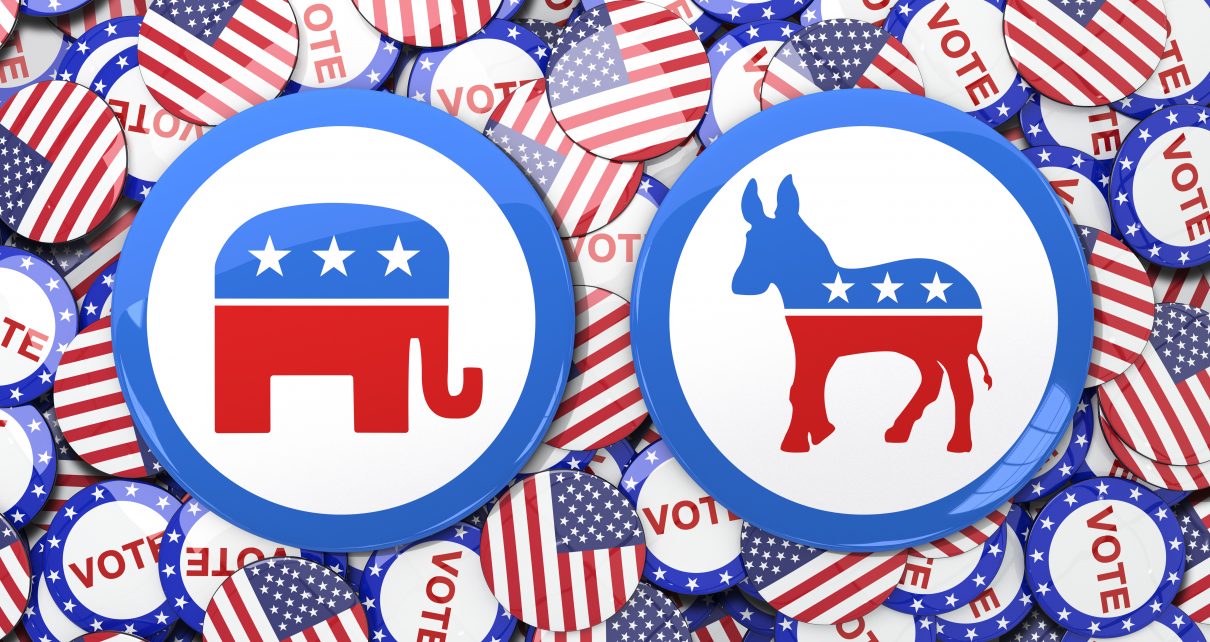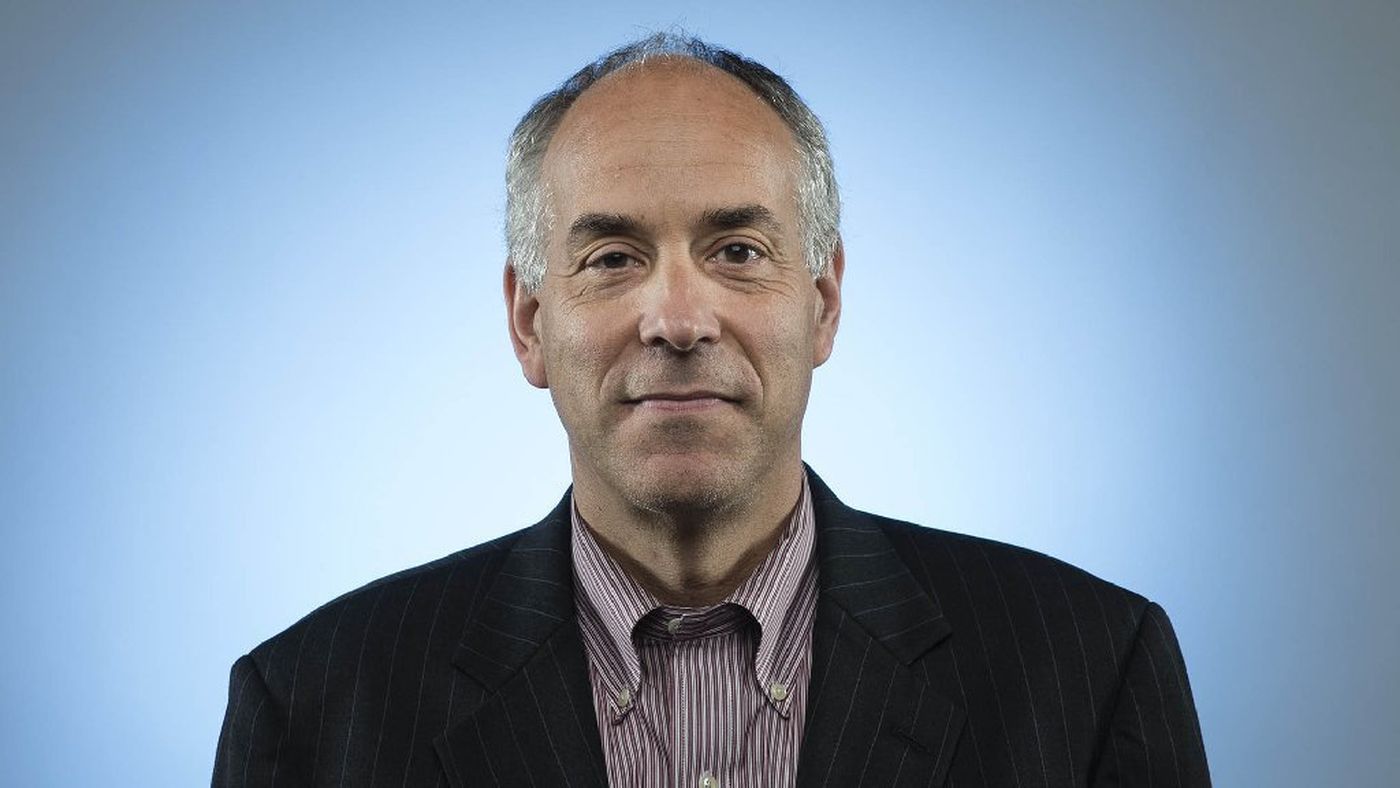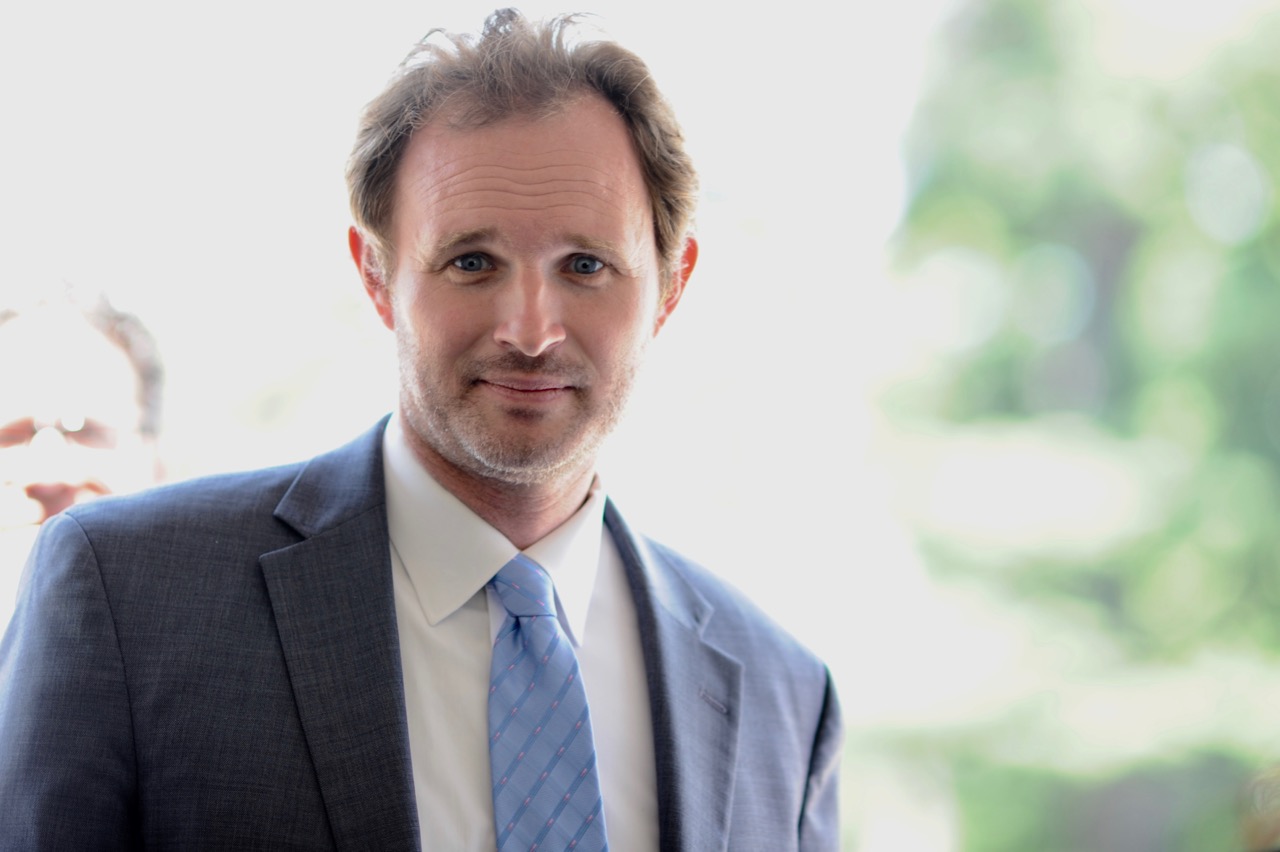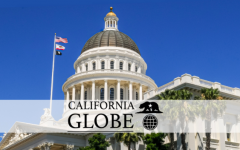
Democrat and Republican vote buttons. (Image: vectorfusionart/Shutterstock)
The Media and Twitter Care about January 6
American voters rank it ‘lowest priority’ issue
By California Globe, June 29, 2022 9:10 am
The chief television critic for The New York Times, James Poniewozik, raved about Tuesday’s edition of the January 6th Committee: “The investigation played like the Watergate hearings as punched up by the writers’ room of 24.”
Press play to hear a narrated version of this story, presented by AudioHopper.
Poniewozik goes on to gush about how much the hearings share “in common with a scripted TV mini-series: narrative, editing — even surprise reveals, as when the committee sprang a bonus episode, featuring Cassidy Hutchinson, an aide to Mark Meadows, the former White House chief of staff, on a day’s notice.”
Let’s put aside the irritating little detail that both Secret Service agents present for Hutchinson’s bombshelliest bombshell — that Trump attacked his agents and lunged for the steering wheel in an effort to join the march on the Capitol—are reported by NBC’s Chief White House Correspondent Peter Alexander to be “prepared to testify under oath that neither man was assaulted and that Mr. Trump never lunged for the steering wheel.”
???? A source close to the Secret Service tells me both Bobby Engel, the lead agent, and the presidential limousine/SUV driver are prepared to testify under oath that neither man was assaulted and that Mr. Trump never lunged for the steering wheel.
— Peter Alexander (@PeterAlexander) June 28, 2022
Let’s also put aside the wisdom of allowing Hutchinson to testify not to what she saw, but to what others told her they saw. Fans of Judge Judy know there’s a word for that — hearsay — and it’s typically inadmissible. Her lawyer is now spelling out that regardless of what actually occurred, Ms. Hutchinson didn’t lie because she truthfully “recounted what she was told.” Yeah, that’s why they don’t allow hearsay.
Ms. Hutchinson testified, under oath, and recounted what she was told. Those with knowledge of the episode also should testify under oath. https://t.co/F69nuMH5oy
— Jody Hunt (@realJodyHunt) June 28, 2022
These two enormous problems aside, the main thing wrong with the Times reviewing the hearings with a cultural magnifying glass unwielded since The Sopranos is that America really doesn’t care.
That’s not California Globe’s opinion.
There’s a way to learn what’s on voters’ minds. You ask them. And usually, politicians are extremely adept at doing so and responding with policies and promises that reflect those concerns.
CBS asked American Voters about 10 issues, including inflation, the economy, crime and so on. Respondents were to select whether the named issue was a “high priority” or a “low priority.” Inflation scored the highest, with 82% of respondents calling it a high priority and 3% a low priority. Economy was just behind, with an 80-2 ratio. The least important issue, by far, was “Investigating January 6th.” The tally of 33% high priority and 40% low was striking because that means even registered Democrats and Democrat leaners, who together typically comprise about 40% of these polls, do not consider Jan 6 a high priority.
New CBS poll: “investigating January 6th” was the LEAST important issues to voters pic.twitter.com/sLpWwS0Ox6
— InteractivePolls (@IAPolls2022) June 28, 2022
The CBS Poll is not the only sign of an increasing gap between what Americans think is important and what the media thinks Americans should think is important. On June 21, Rasmussen Reports released its weekly “Top Voter Midterm Issues” snapshot. Abortion had rocketed up the charts to American voters, with 75% dubbing the issue “important” to them, including 54% saying “very important.” That was good enough for 7th place on Rasmussen’s issue matrix. You know what didn’t make the list? January 6th.
All the same, in Rasmussen’s analysis of issues that matter to “US Legacy Media,” there’s “Capital Riot Investigation” in 3rd place. Shockingly, none of the five issues on the Mainstream Media’s top 5 list makes an appearance on the Top 9 list for voters.
It’s a total disconnect. The media cares about things that the voters do not and the voters care about things the media won’t cover.
NEW: Top Voter Midterm Issues v Top Media Midterm Issues
As we wrote below on Sunday, the Abortion Rights issue has moved up sharply to 75% of All Voters saying it is an Important Midterm issue, 54% saying it's Very Important.
Later this week we will retest Illegal Immigration https://t.co/BVqwXVRQyE pic.twitter.com/4oZtwt7Iwt
— Rasmussen Reports (@Rasmussen_Poll) June 28, 2022
In 2018, researchers Jonathan Wai and Kaja Perina produced a study called “Expertise in Journalism: Factors Shaping a Cognitive and Culturally Elite Profession.” The entire thing is fascinating for anyone who wonders how such a chasm formed between what voters care about and what publications care about.
The authors found that 52% of the staff writers at the New York Times and 54% at the Wall Street Journal received degrees from one of America’s 29 most prestigious universities. They estimate that “those who reach the pinnacle of the journalism profession attended an elite school and were likely in the top 1% of cognitive ability. This means top 1% people are overrepresented among the NYT and WSJ mastheads by a factor of about 50.”
A trade once plied by working-class heroes like Jimmy Breslin and Mike Royko and Pete Hamill had largely given way to a profession practiced by alumni of the Ivy League and Stanford.
So that explains why legacy media has such different priorities than American voters. But what’s harder to understand is why the Democrats running the thrilling “TV mini-series” of January 6th aren’t getting the message. Politicians who don’t read polls tend not to stay employed very long. We will see in November if this intense and highly orchestrated focus on an issue that Americans have overwhelmingly scored “low priority” will cost Democrats at the ballot box.
- Klamath Dams Down: Will Ranches Survive? - February 23, 2024
- SPECIAL: We Can End California’s Homeless Crisis in One Year – These Blue States Show Us How - May 31, 2023
- Editorial: Rob Bonta Is Right About Amazon - September 18, 2022





The J6 Hearings are nothing but a taxpayer paid for Democratic Telethon.
Think of it as the ‘Schiff Telethon for Democratic Cash’ and things become clear.
They are fundraising the hell out of this.
Follow the money.
YES, and toss into the mix that it’s a taxpayer-paid attempted Trump smear.
The establishment RINOs and GOP media (including the Washington Examiner) don’t want Trump to run again. They are doing everything they can to stop him. They want a Haley, Scott, Pompeo, DeSantis or anyone else except Trump. It’s business as usual in the SWAMP. (https://justthenews.com/politics-policy/all-things-trump/conservative-dc-outlet-claims-trump-unfit-power-after-hutchinsons)
P.S. Trump will run for POTUS again. How would Newsom do against him? Not well, imo. (https://www.newsmax.com/newsfront/kelly-anne-conway-donald-trump-2024-axelrod/2022/06/30/id/1076771/)